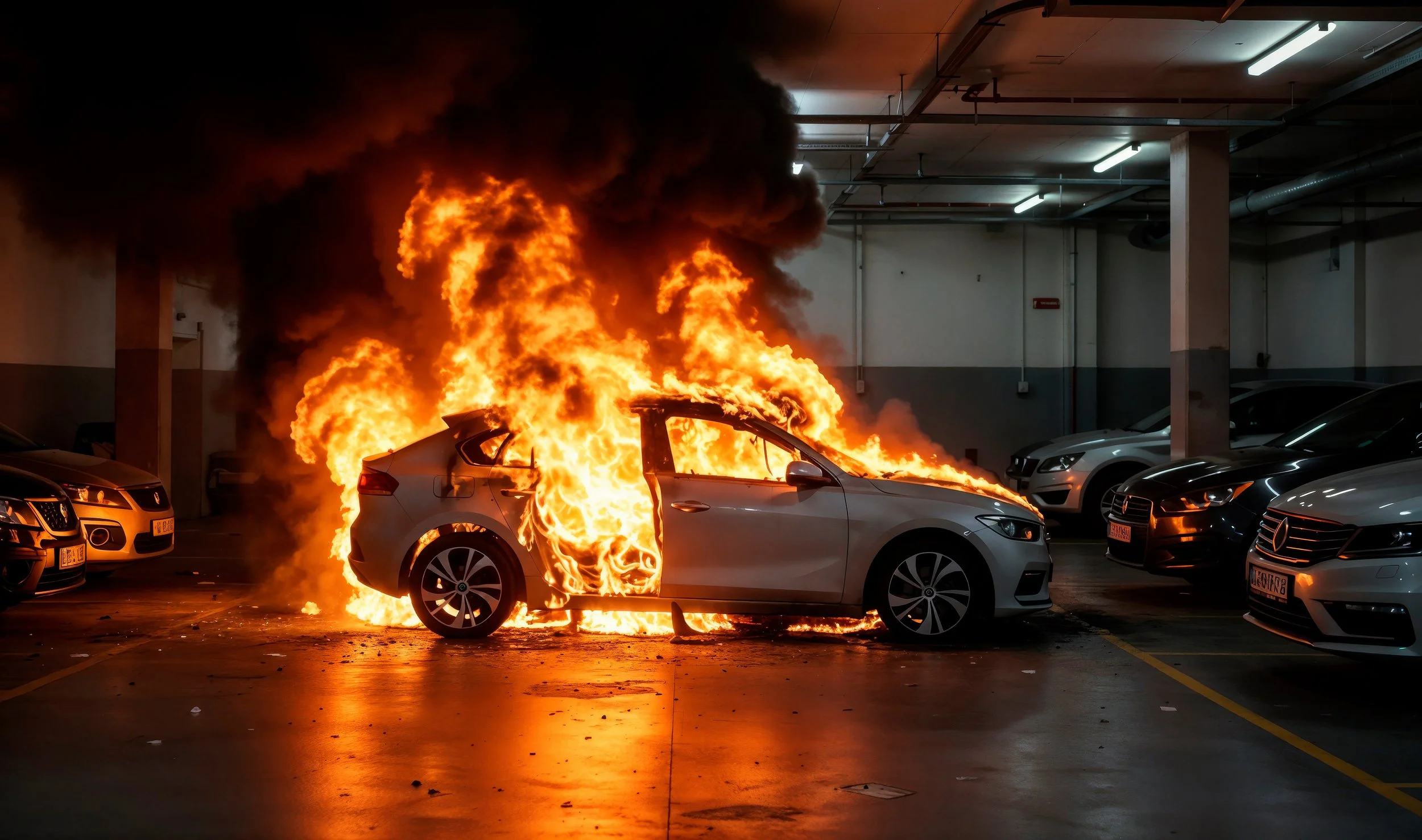Battery fires are on the rise
With the increasing adoption of electric vehicles, catastrophic battery accidents in the home and on the road have also increased.
Li-ion battery failures pose significant dangers to persons and property. Thermal runaway can begin suddenly, igniting structure fires and exposing nearby persons to explosions and flying debris.
Causes of battery fires
Individual Li-ion cells typically fail due to
Crushing or puncture, such as in a vehicle collision
Over heating, from external sources or electrical system failures
Improper charging, due to a mismatched or malfunctioning charger
Manufacturing defects within the individual cell or larger battery pack assembly
Accumulated wear & tear can also increase susceptibility to these traditional causes.
Without sufficient design considerations the failure of one cell is highly likely to cascade to the rest of the battery pack, multiplying the total energy released.
Anatomy of a battery fire
When a Li-ion cell is damaged it can enter “thermal runaway”, a phenomenon wherein all the stored electrical energy is rapidly discharged.
The intense heat thus produced within the cell leads to the generation of gases and the increase in internal pressure causing battery rupture, fire, and explosion.
Prevention
There are steps you can take to make thermal runaway events less likely and less dangerous.
Choose reliable battery pack manufacturers
Look for companies who:
include safety mechanisms in their designs (barriers, vents, etc.)
source cells from reliable battery manufacturers
share evidence of rigorous testing of their product’s behavior under thermal runaway conditions
Practicing proper use and storage
The majority of battery fires are due to charging while improperly stored. To reduce fire risk, store and charge your battery:
near to fire alarms, sprinklers, etc.
away from combustible materials (gas, paint, etc.)



